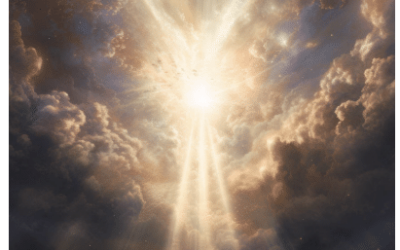“Therefore the Lord Himself will give you a sign: Behold, a virgin will be with child and bear a son, and she will call His name Immanuel,” Isaiah 7:14
Critics often claim that this verse was never meant to be a messianic prophecy. They point out that Isaiah 7 describes an encounter between Isaiah and King Ahaz. The “sign” in Isaiah 7:14 is offered to the King to assure him that God will deliver Judah from their coalition of enemies. The sign of a messiah being born long after King Ahaz was dead would not seem to accomplish the goal. They argue, therefore, that Isaiah 7:14 could only be talking about something that happened shortly after Isaiah spoke those words and could not have anything to do with the Messiah.
The problem with this argument is that it assumes that Isaiah 7 was written in a vacuum. It assumes that the story was written with no connection to the rest of the book of Isaiah and for absolutely no purpose other than to dryly record an event. The Book of Isaiah, however, is not a memoir or a work of history. There is very little narrative in Isaiah at all. When it does tell a story, it is utilizing that story to make a larger point. When the New Testament author cited Isaiah 7:14 in reference to Jesus, it was not merely ripping the verse out and slapping it on the page. It was making a larger case that Jesus was the fulfillment of a series of prophecies about a promised Messianic Son in Isaiah 7-12.
Matthew directly applied the verse to Jesus, saying:
“Now all this took place to fulfill what was spoken by the Lord through the prophet: ‘Behold, the virgin shall be with child and shall bear a Son, and they shall call His name Immanuel,’ which translated means, ‘God with us,'” (Matthew 1:22-23)
Luke’s gospel, however, lays out the point more holistically. While Luke does not directly quote from any one verse, Luke 1:31-33 directly connects the virgin birth with prophecies quite like Isaiah 9:7, such as sitting on the throne of David and ruling over a kingdom forever. There is also language similar to that of Isaiah 10-11. Luke is not merely proof-texting, but applying the idea of the promised Davidic Son of Isaiah 7-12 as a whole to Jesus, starting with the virgin birth. Likewise, Matthew does not cite only Isaiah 7:14. Matthew 4:15-16 also applies Isaiah 9 to Jesus, and a case can be made that Matthew 2:23 applies Isaiah 11 to Jesus as well. Elsewhere in the New Testament, Jesus is explicitly identified with the “root of Jesse” in Isaiah 11:10 (Romans 15:12) as well as the “stone of stumbling” from Isaiah 8:14-15 (Romans 9:33, 1 Peter 2:8). Clearly, they saw Isaiah using the story of his encounter with King Ahaz as part of a larger point that Isaiah was making to his readers in that whole section of his book.
But is this really what Isaiah intended? The details certainly point that way:
- In Isaiah 7:3, when God sends Isaiah to speak to the king, God tells Isaiah to bring his son Shear-jashub. The Bible specifically says that Isaiah’s children are signs from the Lord to Israel (Isaiah 8:18) and in the very next chapter we are told of Isaiah naming another one of his children as a prophetic sign (Isaiah 8:3-4). The fact that Isaiah is told to bring a specific son by name is no accident. It is a part of his message. The child’s name, Shear-jashub, means “a remnant shall return.” Isaiah’s conversation with the king is about God protecting Judah, but embedded here was something more: a promise that a remnant would return. Return from where? From exile, of course. The whole Book of Isaiah is dealing with the coming exile and the promise of return and restoration. That was not, however, King Ahaz’s concern. He was concerned about his enemies at that moment, and God promised to protect him from those enemies. Yet, God was also clearly speaking to something bigger than that, and He had Isaiah bring with him the message “a remnant shall return.” If you read Isaiah 7-12 together, this message is central and frequently repeated. It is also a future Messianic hope.
- Isaiah is speaking to King Ahaz in the singular, but when we reach 7:13, the grammar changes and he is speaking to “the house of David” in the plural. While it is hard to see it in English, the pronouns change from the singular “you” to the plural “you,” and the verb forms reflect a plural address. Isaiah delivered his prophecy in such a way as to speak to a broader audience than the King alone.
- Isaiah 8:8 goes on to refer to Immanuel as the one to whom the land belongs, so the promised child of Isaiah 7:14 is brought over into the greater context, and not as a mere bystander. Isaiah 9:6-7 describes the promised Son who will sit on the throne of David and rule forever. Isaiah 11 speaks of a shoot from the stump of Jesse (David’s father) who will rule in righteousness. The image is of the house of David as a tree that has been cut down to a stump, but then a new shoot springs forth from the tree and brings forth new life. It is an image of a future restoration through a new Davidic king. There is a consistent theme of a future Messiah to be born. It runs throughout the passage and begins with Isaiah 7:14 and the first promise of Immanuel.
- The inclusion of this story in Isaiah’s book at all shows that it contained a message for later readers and not just for King Ahaz alone. There probably was a child born in the days of Ahaz that served as a sign for him in his situation, but we are told nothing more about that because that was not the point of telling this story. Isaiah told this story to point to the larger message to his readers, the message of coming judgment, and the promise of restoration. There was a dual fulfillment of this prophecy that was intended by God from the very beginning. That’s what made this story meaningful even to Isaiah’s original readers, who themselves would have read this chapter well after King Ahaz and Jerusalem’s deliverance from the immediate, temporary threat. Isaiah’s prophecies were about the coming exile and the later hope of restoration under the Messiah. Isaiah includes the story because it contained that message, even if King Ahaz would not have known it.
The narrow and superficial reading of Isaiah 7 offered by skeptics misses all of this and therefore misses the beautiful consistency that runs through these chapters. Isaiah is warning the people that a violent judgment is coming, but he also promises a hope beyond that trial. The ultimate hope of an eternal kingdom and a Messiah King who will be “God with us” and who will be called “Mighty God.” Jesus is that divine Messiah.






